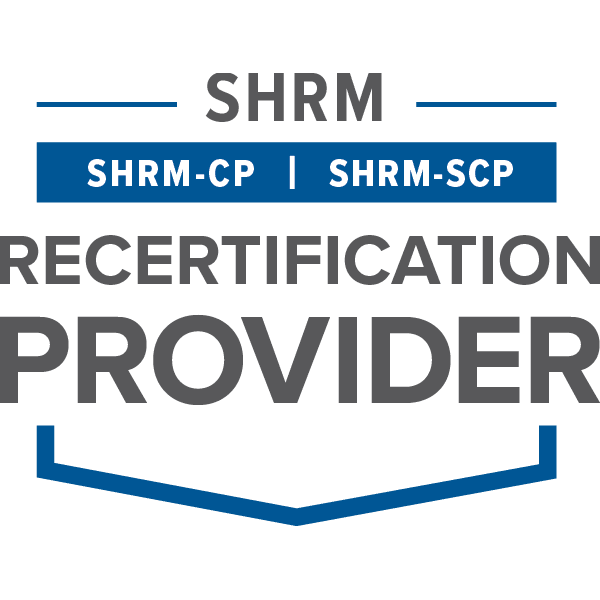What to Expect from De-Escalation Training for School Teachers
Learn important de-escalation skills that can help you deal with stressful situations or a crisis when working with students or parents. PLA’s online training course includes:
- A basic sequence for de-escalating students and parents
- Effective tools for emotional self-management
- The basics of escalated conflict
- How to attend to students’ psychological needs
- Learning Assessments & Certificate of Completion
Course Description
Our asynchronous course on De-escalation Training for Teachers and Schools utilizes our industry-leading methods, which have been successfully taught and applied to participants in more than 60 industries around North America, from small retail shops to Fortune 100 companies.
Course Curriculum
- Overview of basic escalated conflict theory, psychology, and neurobiology
- Practical self-regulation and emotional self-management techniques
- Learn to put student care before position or policy enforcement without eliminating policies
- Learn to utilize basic conflict psychology in de-escalating conflicts
- Reflective listening techniques
- How and when to implement reassurance during de-escalation
- Using policy or rules explanation effectively
- Learning to open a space for communication with students and parents

Dr. Jeremy Pollack
Course Instructor
Dr. Jeremy Pollack is a leader in the field of workplace conflict resolution and peacebuilding. He is the Founder of Pollack Peacebuilding Systems, an international conflict resolution consulting firm. Dr. Pollack coaches and trains executives and employees at a variety of levels and industries, from Fortune 500 companies to major non-profits. He has a Ph.D. in Psychology and an M.A. in Negotiation, Conflict Resolution, and Peacebuilding. Read more about Dr. Pollack HERE.
For as long as anyone in the school community can remember, managing student behavior has been the most difficult part of teaching or working in a school. You need only read the news or the latest statistics from the Crisis Prevention Institute to know that it is more important than ever for teachers to know how to de escalate a power struggle before a student’s behavior becomes dangerous. To help with this, teachers can learn effective de escalation strategies that involve understanding each student’s feelings and adapting their own behaviors accordingly.
Teachers Need Practical De Escalation Strategies
In your classroom, you are the boss. Of course, you as a teacher are also accountable if a student’s behavior gets out of control. De escalation and calming strategies should be part of your approach to student behavior and to the classroom environment. Too often, new teachers and new members of the school staff have unrealistic expectations of student behavior. They assume that students will be focused and cooperative most of the time. Teachers underestimate the increased anxiety that students live with on a daily basis and how much this affects the school environment.
An Ounce of Classroom Management Is Worth a Pound of De Escalation
Many teachers do not know much about the warning signs of an escalating conflict. In your classroom, you should be mindful of your own body language and respectful of your student’s personal space. If you make active listening a habit, not only will students learn more, but you will also not have to devote as much time to de escalating fraught situations.
The More You Support Students, the Less You Will Have to De Escalate
The best classroom environments are characterized by trust and respect. In such environments, students feel free to ask and respond to challenging questions. Students discuss their ideas, opinions, and feelings freely with their peers. The teacher is the first among equals, and students feel like they are learning rather than being taught. Of course, creating an environment like this requires an exceptional amount of preparation and focus on the teacher’s part.
To create an environment like this, not only must teachers be knowledgeable about the course content, but they must also develop their emotional intelligence. Educators must use effective communication techniques with their students. They must also understand and identify their own emotions so that the teacher’s response to a student’s actions does not make the situation worse.
How to De Escalate Common Situations in the Teaching Profession
Almost all teachers can rattle off a long list of challenging situations that their training did not prepare them for. In your education-focused coursework in college, and even in your practical training when you are student teaching, the focus tends to be on lesson planning and educational standards. Most of the time, the biggest challenges that teachers face come from administrators and other adults. When something goes wrong, everyone gets upset at the teacher. It is hard to stay calm when everyone wants to blame you for problems that are much bigger than you are. Learning to de escalate conflicts with administrators and parents gives educators more time and energy to focus on educating.
Student Behavior Is Just the Beginning
Developing engaging lessons and empathizing with the emotions of young people is the key to building a rapport with your students. Too often, though, when problems occur in the classroom, parents want immediate intervention, even though they have little understanding of how much you are trying to accomplish with such limited resources. Despite how much you try to remain calm as you attempt to stand up to your parents and explain that you are only one person and doing your best, parents have an extraordinary ability to only hear what they want to hear.
Dealing with belligerent parents is so much easier if you are trained to deal with threats from pushy parents who want to argue with all your decisions. Through de escalation training, you can develop the skills to de escalate an incident before it rises to the level of a threat and before you feel mentally drained or even physically unsafe.
De Escalation Strategies for Teachers Benefit Students, Too
When you engage with students on a human level, whether or not they are having a good day and whether or not they are making good academic progress or following the rules, you make it easier to de escalate conflicts in the school environment. For example, if you build trust with the kids in your class, then it will be easier for them to talk to you and your colleagues about problems that they are having with their classmates, and it will not feel like snitching when one student tells a teacher that he or she is upset about the behavior of another student. A friendly and outgoing attitude and the willingness to occasionally bend the rules are the key to creating an environment where you are in control but students feel comfortable talking to you about their feelings.
A School Environment Characterized by Safety
Many schools do not give teachers a course in de escalation strategies, and teachers must figure out for themselves how to respond to troublesome behavior. It is not easy to stay calm when you witness disturbing behaviors and feel that your safety or the safety of your students is in danger. You should discuss de escalation with your class early and often. Support your students and help them practice de escalation strategies and conflict management behaviors. When the school year ends, they may feel that the most important thing you taught them was not math or language arts, but how to de escalate conflict and respond to their own anxiety and anger and other people’s in a calm and prosocial way.
De Escalation Is a Mark of Maturity
When you teach young children, intervention in their disputes is a big part of your job. You put a lot of time and emotional resources into the prevention of conflicts, such as by setting up a system where each student gets a turn using a sought-after item or doing a sought-after activity. One of the goals of elementary school is learning to stay calm even when you don’t get what you want. Teachers can turn an angry response from a student into a learning experience about dealing with emotions.
Teachers Get Too Much Blame and Too Little Support
Teaching is one of the hardest jobs in the world. Even if you attend ongoing training to learn strategies to give you the ability to deal with uncooperative children and adults, it still feels overwhelming a lot of the time. Behavior management feels a lot more manageable when you realize that you can use the same de escalation techniques with a pushy parent or with an administrator who will not listen to reason as you can with a misbehaving student. In just a few training sessions, you can learn to deal with some of the most troublesome and distracting behaviors that you encounter in your workday. Even a brief training course in de escalation strategies can make it easier to cope with so many unruly children and adults when you have so little institutional support.
Peaceful Leaders Academy Can Help You Stop the Escalation of Conflict in Your School
Peaceful Leaders Academy provides training for professionals in many different industries, and our certified trainers know that each profession has to deal with its own specific kinds of conflicts. Our training for teachers covers topics such as dealing with student aggression and talking to parents about sensitive topics. You will even learn to mediate conflicts between a student and his or her parents.
How Does Peaceful Leaders Academy Training for Teachers Work?
Teachers will learn about the five modes of conflict management, which are accommodating, avoiding, competing, compromising, and collaborating. You will learn which mode to use when trying to resolve a conflict between a student and another teacher. You will also learn to empower each student to resolve his or her own conflicts in a mature and emotionally intelligent way.
Convenient Training Options for Busy Teachers
When you spend every waking moment on lesson plans and grading student assignments, it is hard to find time to attend a conflict management workshop. The good news is that Peaceful Leaders Academy adapts its workshops and courses to your work schedule and will help you address the types of conflicts that you are most likely to encounter at work so you have more time in your day to focus on your actual work. We offer in-person workshops for groups of various sizes. We also conduct our training through synchronous and asynchronous online sessions. Your school or school district can decide which training format is the most appropriate.
Contact Peaceful Leaders Academy to Learn to Resolve School Conflict
Peaceful Leaders Academy training can teach you the strategies you need to make your classroom and your school more peaceful and conducive to learning. You can learn an array of strategies to stop conflicts from escalating. The path to a more peaceful workplace begins here. Contact the Peaceful Leaders Academy today to find out more about how we can make your job as a teacher less stressful and more rewarding.
Course Details
Learn to de-escalate individuals while attending to people’s psychological needs and regulating your own emotions.
Course Provider
Industries Served
PLA is recognized by the Society for Human Resource Management
to offer Professional Development Credits (PDCs) for SHRM-CP® or SHRM-SCP® recertification activities.











